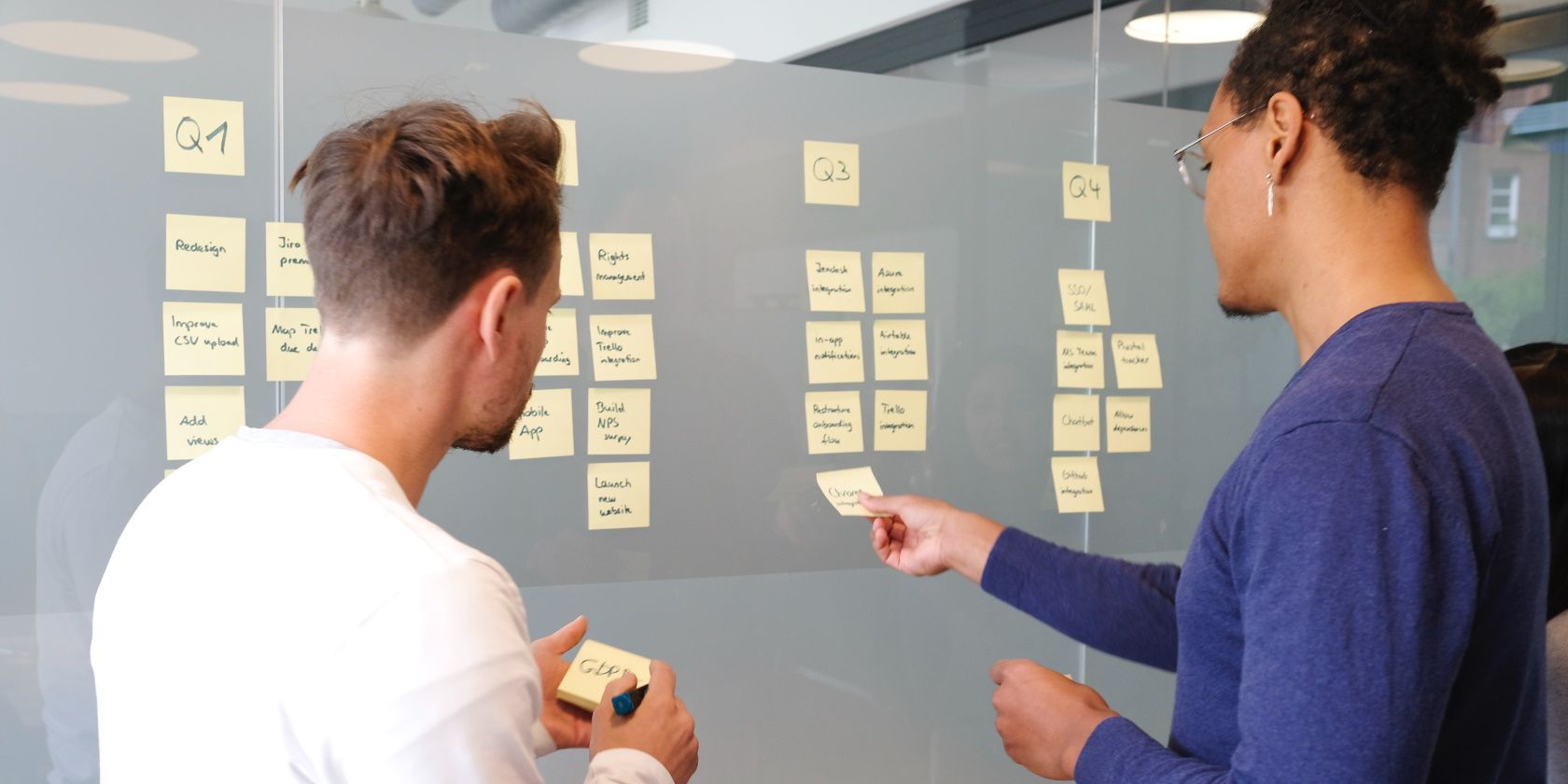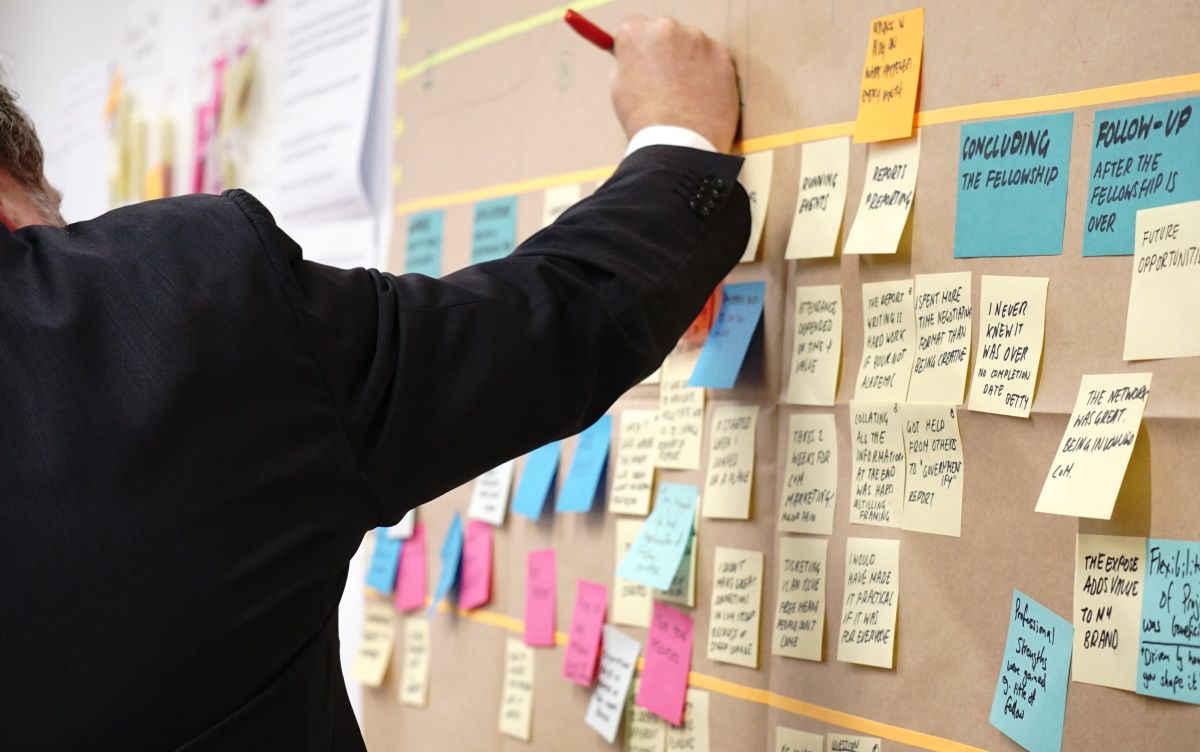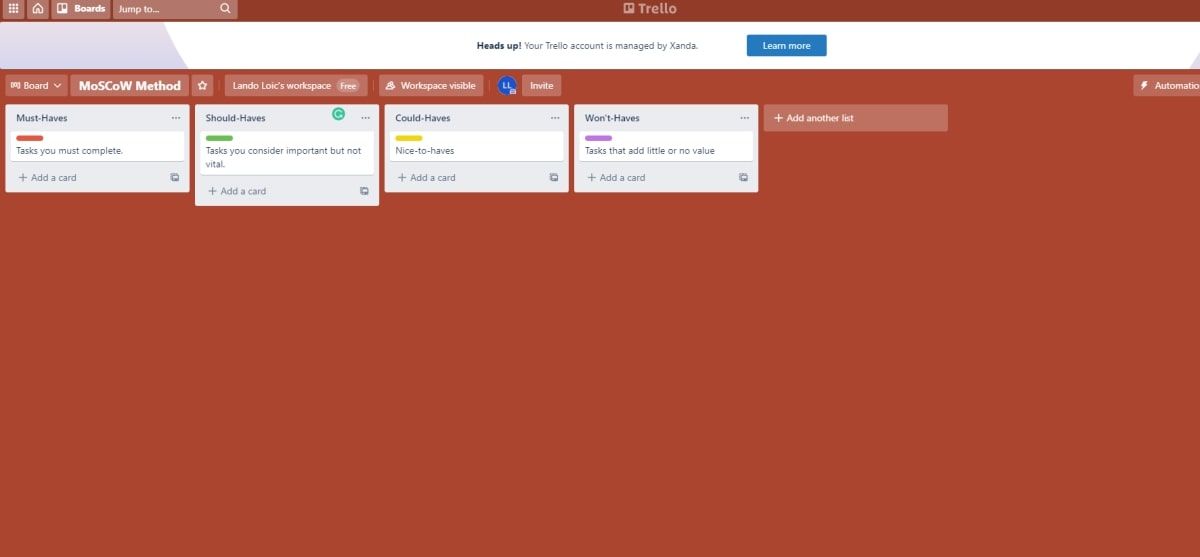Multitasking often seems to be the ideal solution to manage your time when you find yourself with a long list of tasks. But the problem with juggling multiple tasks is that you risk ending your workday with a pile of unfinished tasks and a feeling of frustration.
Prioritizing your tasks can help. In this article, we will explore how you can do that using the MoSCoW method.
What Is the MoSCoW Method?
There are a number of tasks you need to complete within a set time frame and budget. However, if those tasks are not organized according to importance, they often become up for grabs, usually not to the benefit of the entire project.
The MoSCoW matrix is a prioritization framework that can help you determine which tasks are essential at any given moment, and structure your to-do list in order of importance.
This way, organizing your tasks can help you and your team members allocate more time, money, and attention to the most important ones before moving down your to-do list.
Origin of the MoSCoW Technique
Dai Clegg, a software development specialist at Oracle UK, invented the MoSCoW method, or the MSCW method, as it was known in 1994 (the two Os were added later to help with pronunciation).
Although Clegg originally developed this prioritization technique for use in Rapid Application Development, it is quite versatile in application. You can use it for market/product launches, starting a new business, or something as mundane as planning a party.
MoSCoW Prioritization Categories
As we have hinted above, the two Os don't have any significance in this acronym besides making it easier to pronounce and memorize. That said, the capital letters in the acronym represent four prioritization categories:
- Must have
- Should have
- Could have
- Won't have
Let's dive deeper:
1. Must Have
This category represents the requirements or tasks you must complete to ensure that the entire project is successful. There's no going around them. It contains non-negotiable needs for the desired outcome. Failure to complete these tasks on time can lead to unfavorable consequences.
Here are some questions you can ask yourself to know which tasks or requirements belong to this category:
- Will the project work if you do not complete this task?
- Can the project be successful without this requirement?
- Is there a workaround that you can devise to avoid doing this task?
If your answer is no, then this task is the foundation that shapes the entire project. Therefore, it belongs to the must-have category. For example, if you are developing an app, you must ensure that its security is watertight to safeguard users' personal and sensitive information.
2. Should Have
Should-have tasks immediately follow must-haves in terms of priority. They add a lot of value to the entire project and make it more successful when you complete them. But the project can still function if you leave out should-haves. In other words, the completion of these tasks is important but not vital to the project's success.
You can create this category by asking yourself if there is a workaround, or if the project can still move ahead if you don't meet the requirements. For example, you should integrate social media tools into your app, but you can certainly go ahead without them.
3. Could Have
Completing could-haves is important, but they don't add as much value to the project when you compare them with should-haves, and they also cause less harm when you omit them. You can also call them nice-to-haves, provided you can fit them within your budget and time frame.
In order to create this category, take a look at the list of tasks you wish to complete to determine what will have a deep impact (should-haves) and what will add less value (could-haves). For example, you could add the dark mode feature to your app if you can.
4. Won't Have
This category represents the lowest priority of the MoSCoW method, and it contains tasks you should not work on within a particular budget and deadline. The presence or absence of won't-haves has no impact whatsoever on the completion and success of the entire project at this time, but it could in the future on this project, or another one.
Creating this category allows you to harness your focus, and resources on the first three. For example, you can add a new security feature to your app through an update to patch software vulnerabilities.
Why You Should Use the MoSCoW Method
The MoSCoW method is most effective when you want to include your team (or few representatives) and other stakeholders to capture a broader perspective and eliminate the risk of bias.
Additionally, this prioritization technique will help your team know how many resources and effort to dedicate to each category to ensure the whole project's success.
How to Use the MoSCoW Method Using Trello
1. Gather Team Members
The first step to applying the MoSCoW technique is to gather all the key players who will participate in the project. If you are working on a massive project that involves many people, it might be chaotic to bring everyone around the table. Instead, you can gather a few team leaders or decision-makers in the various departments related to the project.
2. List All the Tasks


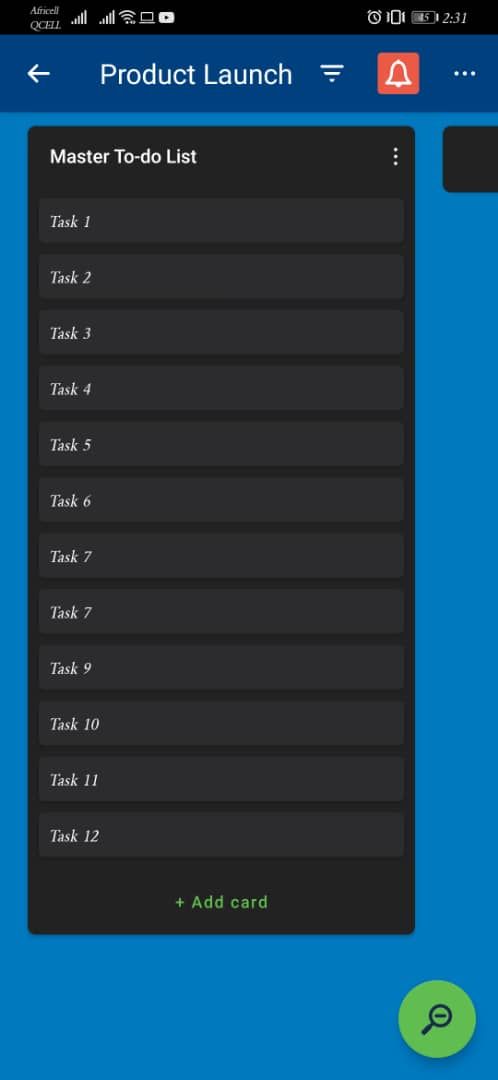
Now that you have gathered all the people who will participate in the project, it is time to list all your tasks. Let everyone participate, and write all the ideas without negotiations. You can create a master to-do list in an app like Trello for the tasks.
3. Categorize Your Tasks
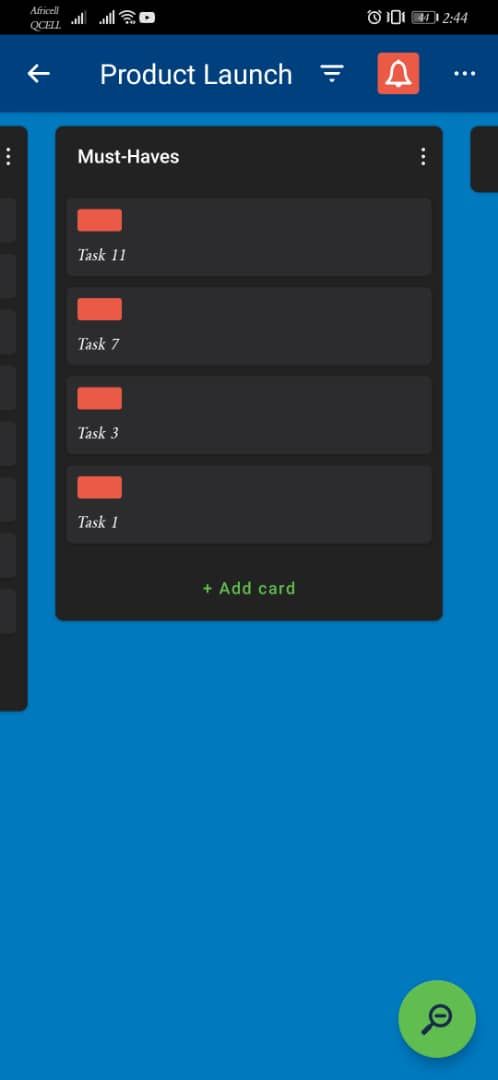
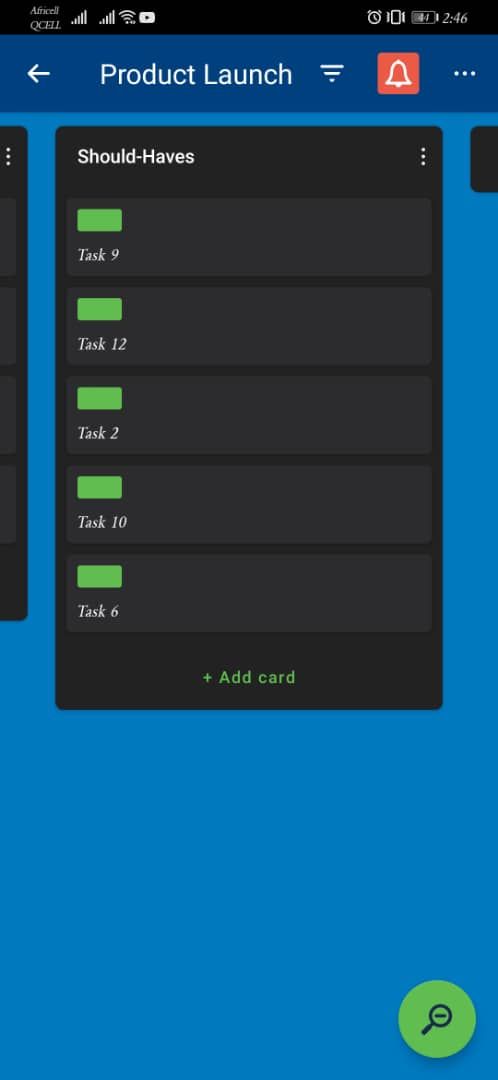
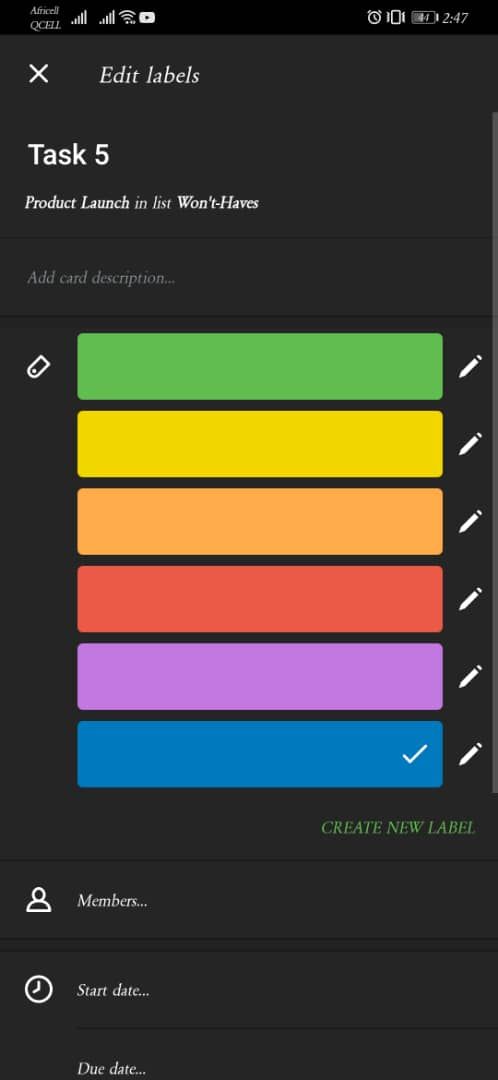
Before you start grouping all your tasks in each category, you could allocate financial and time resources for all the steps of the MoSCoW method to ensure that you remain within your limits.
Now you can discuss with your team to assess the importance of each task and put them in their respective categories. Create all the MoSCoW categories on your Trello board, and assign each task accordingly.
You can also drag tasks in each category to organize them, starting with the first task you want to work on. Lastly, you can assign a particular label to each category to add clarity to your Trello board.
Download: Trello for Android | iOS (Free, premium version available)
Improve Your Productivity Using the MoSCoW Method
Arranging all your tasks according to their priorities is a sure way to improve your productivity. You can use the MoSCoW method to ensure that you use your resources on the most relevant tasks to your projects and to foster healthy teamwork in your organization.

